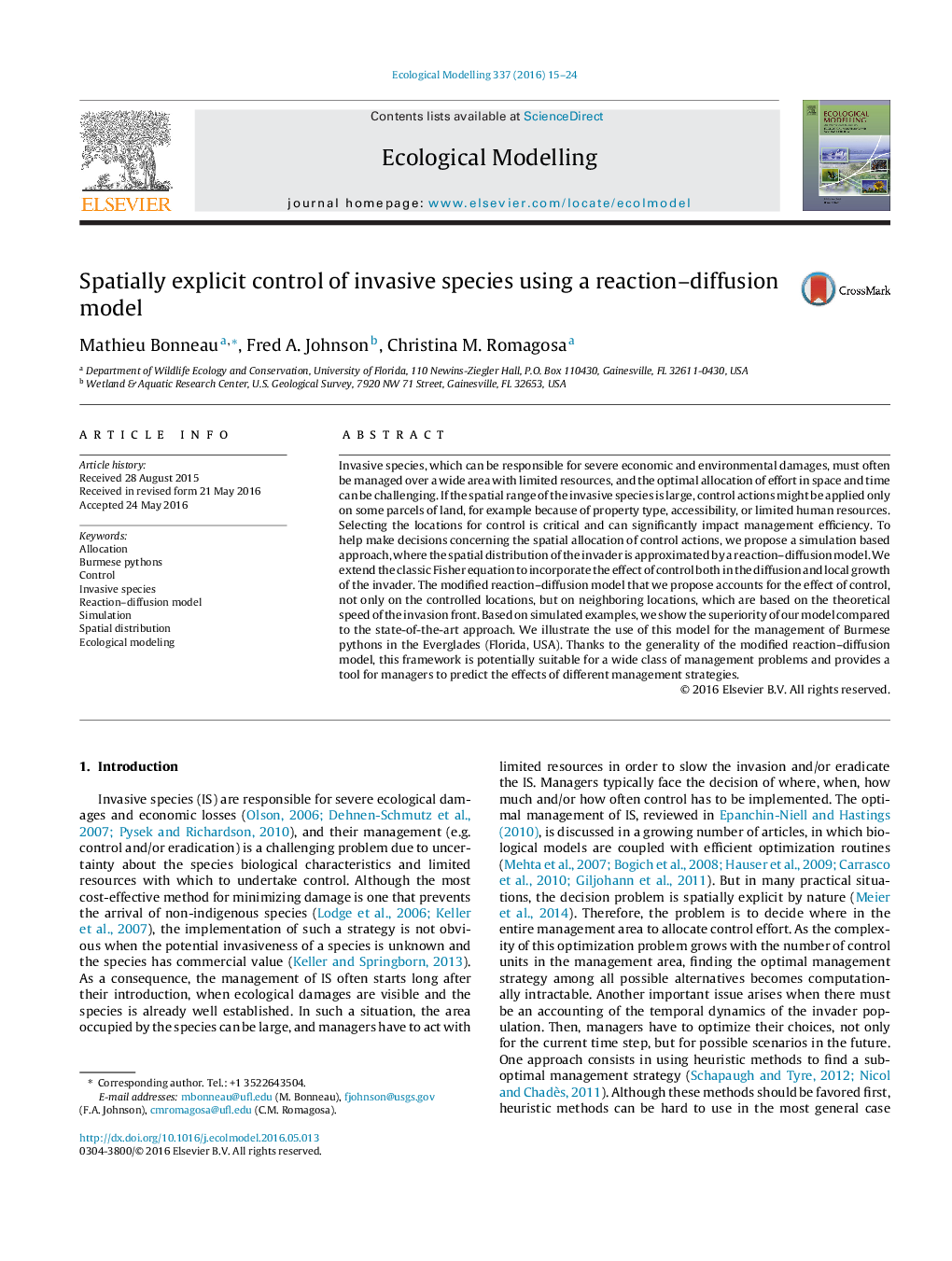| Article ID | Journal | Published Year | Pages | File Type |
|---|---|---|---|---|
| 6296044 | Ecological Modelling | 2016 | 10 Pages |
Abstract
Invasive species, which can be responsible for severe economic and environmental damages, must often be managed over a wide area with limited resources, and the optimal allocation of effort in space and time can be challenging. If the spatial range of the invasive species is large, control actions might be applied only on some parcels of land, for example because of property type, accessibility, or limited human resources. Selecting the locations for control is critical and can significantly impact management efficiency. To help make decisions concerning the spatial allocation of control actions, we propose a simulation based approach, where the spatial distribution of the invader is approximated by a reaction-diffusion model. We extend the classic Fisher equation to incorporate the effect of control both in the diffusion and local growth of the invader. The modified reaction-diffusion model that we propose accounts for the effect of control, not only on the controlled locations, but on neighboring locations, which are based on the theoretical speed of the invasion front. Based on simulated examples, we show the superiority of our model compared to the state-of-the-art approach. We illustrate the use of this model for the management of Burmese pythons in the Everglades (Florida, USA). Thanks to the generality of the modified reaction-diffusion model, this framework is potentially suitable for a wide class of management problems and provides a tool for managers to predict the effects of different management strategies.
Keywords
Related Topics
Life Sciences
Agricultural and Biological Sciences
Ecology, Evolution, Behavior and Systematics
Authors
Mathieu Bonneau, Fred A. Johnson, Christina M. Romagosa,
